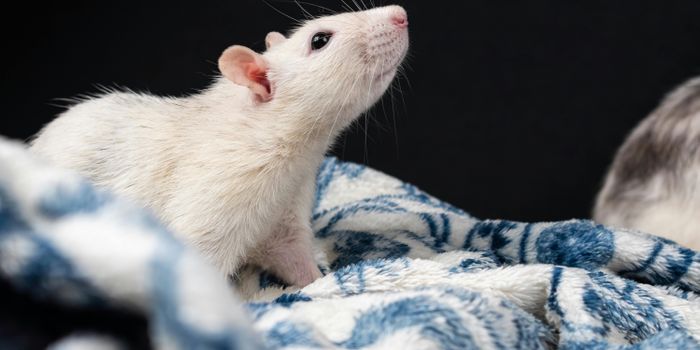
Bullying is not about disliking or excluding someone. In fact, even if someone slaps another person, it wouldn’t necessarily count as bullying if it was an isolated event.
Bullying is a conscious, repeated and hostile behavior. Bullies act with the intent to harm others to gain real or perceived power.
Finding a way to end bullying has been a focal point for educators, administrators, policymakers, and parents. But, despite the enormous surge in policy and research going into fixing the problem, there is little evidence to suggest that current interventions are working.
Now, a
study shows that the solution to bullying lies in the hands of the students themselves. In particular, it lies in the hands of the students most connected to their peers.
A team of researchers from Princeton, Rutgers, and Yale University wanted to know whether certain students had immense influence over the social norms at their school. These social influencers were not necessarily the most popular kids school-wide. They were students who proved to be influential within their smaller friends groups.
The researchers designed a test program called the
Roots Program. The program tested whether the social influencers could curb bullying by making their anti-conflict stance well known. “We designed our own curriculum because current programs address problems as defined by adults, and they aren't necessarily fitted to each individual school environment," said lead author
Elizabeth Levy Paluck, associate professor of psychology and public affairs at Princeton. "We [thought] the best way to change social norms [was] to have these student influencers speak in their own voices. Encouraging their own messages to bubble up from the bottom using a grassroots approach can be very powerful.”
The researchers ran the Roots Program during the 2012-2013 school year in middle schools across New Jersey. One year earlier, New Jersey Governor Chris Christie signed a bill that required teachers to have anti-bullying training. This gave the researchers a chance to offer their program to schools with the support from the State Department of Education. They implemented the program into 56 New Jersey middle schools.
Half of the middle schools were randomly assigned to receive training through the Roots Program. The other half was given the opportunity to receive free training at the end of the school year.
The researchers mapped each school's social networks by using a survey measurement known as social network mapping. They distributed a survey to the 24,191 students at the schools. The survey asked the teens to choose the top 10 students at their school who they would spend time with, either in or outside of school, in person, and online. The data allowed the researchers to identify the students most connected with their peers, both in person and online.
This video shows the social network maps of each of the 56 participating schools in the study as measured in fall 2012. Each dot represents a student, and the lines connecting students represent their nominations of one another as people who they chose to spend time with, face to face or online. The blue dots represent students who were among the top 10 percent of students at their school in terms of the number of nominations received, who the researchers call "social referents." (Video courtesy of Elizabeth Levy Paluck, Princeton University)
They then invited 22 to 30 of these students to participate in the Roots Program. Attendance was entirely optional. On average, over 55 percent of invited students came to the Roots Program meeting. The researchers made it easy for the students to attend the meetings by holding them during the school day. They provided class passes ahead of time and held the meetings at different times each week so the students wouldn't miss the same class each time. To make the meetings as fun as possible, the team brought snacks and made sure activities were hands-on. The meetings were student-driven as opposed to lecture-based. In addition, the researchers included as much technology as possible, such as using tablets and computer animations.
The influential students had many significant shared traits. Many had an older siblings, which "suggests they have more exposure to older students with a more mature vocabulary," Paluck said. "Perhaps, [this makes] them savvier communicators." Many of the influential students were in dating relationships. A lot of them also received compliments from their peers about their house. "This cluster of characteristics suggests that these students are hooked into more mature social patterns in their lives and at schools," Paluck said.
The real innovation in the program is using student social networks to choose peers, which leads to a less traditional group of student leaders, Paluck said. ”When adults choose student leaders, they typically pick the 'good' kids. But the leaders we find through social network mapping are influential among students and are not all the ones who would be selected by adults. Some of the students we find are right smack in the center of student conflicts. But the point is, these are the students whose behavior gets noticed more.”
"We wanted to distinguish ourselves from other school campaigns by letting students lead the messaging efforts. We even wanted the aesthetics of the program to look different," Paluck said. "So we put a lot of value into very clean sharp designs and bright colors. We gave them the templates to work with, and they controlled the messaging."
The selected students were encouraged, but not required, to discuss positive ways to handle conflict with their peers. The students used terms they chose themselves so their peers could identify with the message.
The students launched several messaging campaigns throughout the year. They used online platforms such as Instagram, as well as more traditional media such as print posters.
The Instagram campaign used the hashtag "iRespect" to promote tolerance and conflict resolution. The students printed the hashtags on brightly colored paper, signed their names on them, and hung the posters around the school.

Colored wristbands are popular among teens. So, the students launched a campaign that used bright orange rubber wristbands. Each influential student received 20 wristbands. The researchers say the students gave the wristbands to peers they saw intervening in a conflict or helping another student. Each wristband had the program logo and came with a tag that said, "A Roots student caught you doing something great." It's possible, however, that the students gave them to their friends without them having to earn them. Either way, the message was spread.
One of the Roots Program's most popular campaigns was Roots Day. Roots Day was a one-day festival that promoted the Roots Program. The students promoted the campaign through posters, colorful wristbands, and T-shirts. Students asked others to sign a petition to do something nice for someone else at school.
"Roots Day made the Roots program and the Roots students enormously salient to all of the other students at each school," Paluck said. "Students loved the giveaways and were clamoring to sign the petition. It brought everyone in the school together and seemed to unify their attention and energies in a big way."
After the year, the researchers found a significant statistical difference between the schools that participated in the Roots Program and the schools that did not. On average, the Roots Program schools saw a 30 percent reduction in disciplinary results. To put it in perspective, the total estimated number of disciplinary events went from 2,695 to 2,012 across the 11,938 students in all the participating schools. Each conflict would take up to an hour to resolve. The reduction in conflicts meant hundreds of hours were saved.
The schools with the highest proportion of social influencers had the greatest drop in disciplinary events. This fact confirms that specific students exert an outsized influence over a school's behavioral patterns.
"Our program shows that you don't need to use a blanket treatment to reduce bullying," Paluck said. "You can target specific people in a savvy way in order to spread the message. Their behavior serves as a signal to what is normal and desirable in the community. And there are many ways to figure out who those people are and work with them to inspire positive change.”
The study was published in the journal
PNAS Early Edition on January 4, 2016.
Sources:
"Changing climates of conflict: A social network experiment in 56 schools" via
PNAS Early Edition,
press release via Princeton University, Woodrow Wilson School of Public and International Affairs , media from personal communication with Communications Manager and Senior Writer at Princeton University

 Bullying is not about disliking or excluding someone. In fact, even if someone slaps another person, it wouldn’t necessarily count as bullying if it was an isolated event.
Bullying is not about disliking or excluding someone. In fact, even if someone slaps another person, it wouldn’t necessarily count as bullying if it was an isolated event. Colored wristbands are popular among teens. So, the students launched a campaign that used bright orange rubber wristbands. Each influential student received 20 wristbands. The researchers say the students gave the wristbands to peers they saw intervening in a conflict or helping another student. Each wristband had the program logo and came with a tag that said, "A Roots student caught you doing something great." It's possible, however, that the students gave them to their friends without them having to earn them. Either way, the message was spread.
Colored wristbands are popular among teens. So, the students launched a campaign that used bright orange rubber wristbands. Each influential student received 20 wristbands. The researchers say the students gave the wristbands to peers they saw intervening in a conflict or helping another student. Each wristband had the program logo and came with a tag that said, "A Roots student caught you doing something great." It's possible, however, that the students gave them to their friends without them having to earn them. Either way, the message was spread. 







